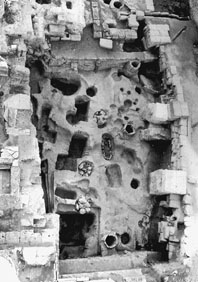

 | Page 725 |  |
painters. During this century foreign visitors poured into Italy (with the more adventurous of them now also seeking to travel to greece). Among archaeologists (broadly defined) the Scotsman Thomas Dempster should be mentioned for his pioneering work on the Etruscans. His De Etruria Regali Libri Septem (Seven Books Concerning Etruria of the Kings) was produced by about 1620 under Medici patronage. Another prominent British visitor was the second duke of Arundel, who arrived in Italy with Inigo Jones in 1613 and excavated several houses in Rome. The ancient statues he took back to his galleries in the Strand in London appear to have started a craze for collection in Britain that grew considerably by midcentury. The artist Peter Paul Rubens spent the years 1600 to 1608 in Rome and was renowned both for his knowledge of antiquity and for his personal collection. The French classical painter Nicholas Poussin spent much of his life in Rome (from 1624 until his death in 1665); he introduced the artist Charles Le Brun to Rome in 1642. From this period dates the start of the great fascination with Rome on the part of the French kings, who saw themselves as successors to the Roman emperors. Le Brun was influential in the introduction of classical style to the court of a man who consciously associated himself with the emperor Augustus—Louis XIV (r. 1643–1715). Under Le Brun’s guidance the French Academy in Rome was created in 1666. Many French artists studied at the academy, and a large collection of casts of ancient sculptures was assembled; ancient originals flowed back to France in such quantities that a papal edict sought to ban the export of antiquities.
Europe’s oldest academy had been founded in Rome some sixty years before. The Accademia Nazionale dei Lincei (lincei from lynxes, meaning the sharp-eyed ones) was born in 1603 and soon counted Galileo Galilei among its members. Though this institution has gone through periods of inactivity and suppression, it has survived to the present day, and it still issues important archaeological publications, first among which is the Notizie degli Scavi (Excavation News). Antiquarian and topographical studies continued to appear in large numbers. A notable project from the 1620s was the Museo Cartoceto (Paper Museum) of Cassiano dal Pozzo (d. 1657), who moved in the intellectual circle of the early Lincei. Dal Pozzo acquired and commissioned thousands of drawings of classical antiquities, although these had to coexist with representatives of his other interests, particularly in the natural sciences. Leonardo Agostini (1593–1669) became the antiquarian to the Barberini family on Dal Pozzo’s recommendation and went on to become, in 1655, the pope’s commissioner of antiquities, excavating in the Forum of Trajan and the Forum Romanum. He is best noted for his catalogs of ancient gemstones, Le Gemme antiche figurate (Ancient Figured Gems; 1657, 1669). At the same time, the huge topographical study of Famiano Nardini (d. 1661) appeared; his Roma antica (Ancient Rome) contained much new information and dealt with the city according to its fourteen ancient regions.

Forum Romanum: Overhead view of G. Boni’s excavation of the proto–historical cemetary, ca. 1902
(Soprintendenza Archeologica di Roma)
The eighteenth century opened with the astonishing discoveries at the buried city of Herculaneum
 |  |